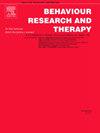研究实验室和现实世界中情绪依赖型冒险行为之间的一致性
IF 4.2
2区 心理学
Q1 PSYCHOLOGY, CLINICAL
引用次数: 0
摘要
冒险行为是发病率和死亡率的主要原因,在遭受亲密伴侣暴力和使用药物的妇女中发病率更高。为了对冒险行为进行更严谨的研究,本研究考察了实验室中情绪依赖性冒险倾向与情绪依赖性物质使用和现实世界中使用物质的女性的性行为的一致性。2018年至2020年期间,从社区机构招募了经历IPV的妇女(N = 142;法师= 40.63;57.8%有色人种)。在实验室里,参与者接受了随机分配的消极、积极或中性情绪诱导,随后他们完成了冒险倾向的行为测量。然后,在接下来的30天里,他们每天完成三次关于情绪状态和冒险行为的调查。参与者更有可能饮酒、使用大麻、使用非法药物,以及在消极和积极情绪状态升高(相对于不升高)时发生无安全套性行为。然而,在实验室中,参与者在消极和积极情绪状态下并没有表现出更大的冒险倾向。此外,实验室中的消极和积极情绪依赖冒险倾向与现实世界中的消极和积极情绪依赖冒险行为不相关。研究结果表明,需要进一步的研究来评估实验室范式在预测现实世界中情绪依赖的冒险行为中的效用。本文章由计算机程序翻译,如有差异,请以英文原文为准。
Examining concordance between emotion-dependent risk-taking in the laboratory and in the real-world
Risk-taking behavior is a leading cause of morbidity and mortality and is elevated among women experiencing intimate partner violence (IPV) and using substances. With the goal of advancing rigorous research on risk-taking behavior, this study examined the concordance of propensity for emotion-dependent risk-taking in the laboratory and emotion-dependent substance use and sexual behavior in the real world among women experiencing IPV and using substances. Women experiencing IPV were recruited from community establishments between 2018 and 2020 (N = 142; Mage = 40.63; 57.8% Person of Color). In the laboratory, participants underwent a randomly assigned negative, positive, or neutral emotion induction, following which they completed a behavioral measure of risk-taking propensity. Then, for the succeeding 30 days, they completed thrice daily surveys on emotion states and risk-taking behavior. Participants were more likely to drink alcohol, use cannabis, use illicit drugs, and have condomless sex during elevated (versus not elevated) negative and positive emotion states. However, participants did not exhibit greater risk-taking propensity in the laboratory in the context of negative and positive emotion states. Further, negative and positive emotion-dependent risk-taking propensity in the laboratory was not associated with negative and positive emotion-dependent risk-taking behavior in the real-world. Findings suggest the need for additional research that evaluates the utility of laboratory paradigms in the prediction of emotion-dependent risk-taking in the real-world.
求助全文
通过发布文献求助,成功后即可免费获取论文全文。
去求助
来源期刊

Behaviour Research and Therapy
PSYCHOLOGY, CLINICAL-
CiteScore
7.50
自引率
7.30%
发文量
148
期刊介绍:
The major focus of Behaviour Research and Therapy is an experimental psychopathology approach to understanding emotional and behavioral disorders and their prevention and treatment, using cognitive, behavioral, and psychophysiological (including neural) methods and models. This includes laboratory-based experimental studies with healthy, at risk and subclinical individuals that inform clinical application as well as studies with clinically severe samples. The following types of submissions are encouraged: theoretical reviews of mechanisms that contribute to psychopathology and that offer new treatment targets; tests of novel, mechanistically focused psychological interventions, especially ones that include theory-driven or experimentally-derived predictors, moderators and mediators; and innovations in dissemination and implementation of evidence-based practices into clinical practice in psychology and associated fields, especially those that target underlying mechanisms or focus on novel approaches to treatment delivery. In addition to traditional psychological disorders, the scope of the journal includes behavioural medicine (e.g., chronic pain). The journal will not consider manuscripts dealing primarily with measurement, psychometric analyses, and personality assessment.
 求助内容:
求助内容: 应助结果提醒方式:
应助结果提醒方式:


